There are not many kite related historical places in Germany. Without doubt one of them is Lindenberg, situated south-east from Berlin in the near of Beeskow and Storkow, two small villages.
On August 1, 1919 a kite train of eight "Schirmkastendrachen" reached the altitude of 9740 m, remaining the world altitude record for half a century, and until now the altitude record for a kite train. The lifting lasted from 6.26am until 0.11pm. The first kite had a surface of 10 m², the second 5 m² and the remaining six kites had each a surface of 8 m². The flying line, made of heavy piano wire, was long nearly 15 km.
The "Schirmdrachen", english umbrella-kite, was a modified Hargrave box kite, but containing a totally different spar construction. The inner spars could be opened and closed like an umbrella to tighten the kite. The after cell was equal or, in later versions, smaller than the front cell (like a Sauls, but much earlier). More informations about this kite you can get from the book W.Schmidt/W.Diem: Drachen mit Geschichte (in german).
The following pictures were taken in 1995 during a "Day of the Open Door" at the observatory in Lindenberg. Some of these pictures I have already published in FANG DEN WIND (club magazine of the Berlin Kite Club) no. 36 - 4/95. The shown kites are made by Werner Schmidt, partially with original parts. On this day the sky was very cloudy and so the pictures are not so good as they could be.
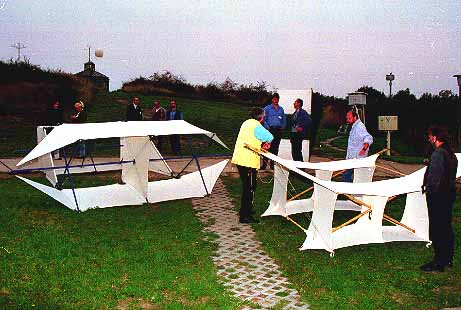
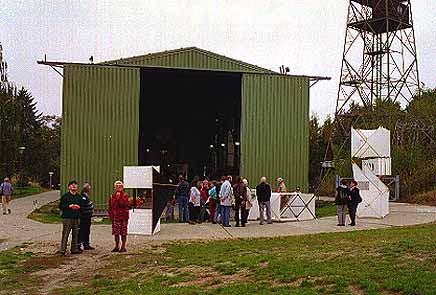
Werner Schmidt with a GRUND-Regulierdrachen, also build from original parts (left) and an old cody war kite. In the background the historical winch house for the big kites. Behind the photographer (thats me) the original reconstructed balloon hall (right picture). In the background to the right you can see the last of originally five radio towers (90 m high); during WW2 wheather forecasts were sent from here up to Norway.
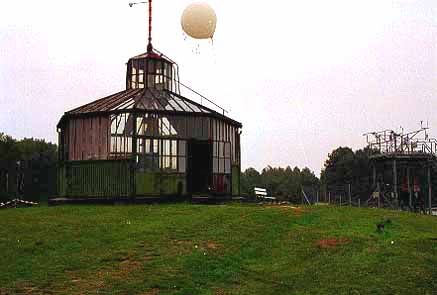
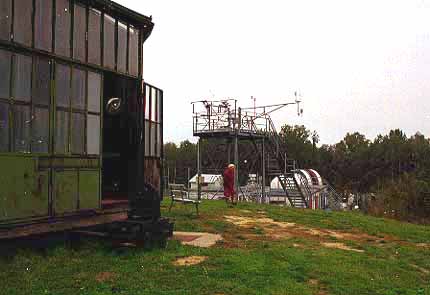
The original winch house of Lindenberg: The winch house was able to rotate referring to the direction of the wind. Above on the roof a wheather balloon and to the right transmitting devices of the todays observatory. On the right picture there is a Azimuth-Umlenkrolle (Anyone who knows the english word for that ?) in front of the winch house. Itīs a pulley to hold the flying wire in a special angle to the winch.
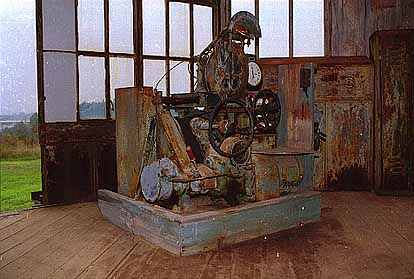
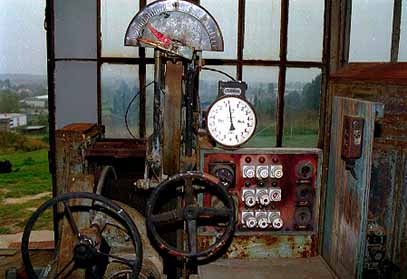
The motor winch, powered by a 200V DC motor. Above in the middle, with the semicircled scale you can see a dynamometer to measure the pull of the kite. The round meter displayed the wire speed (max. 8 m/s). With the big wheels the brakes were operated.
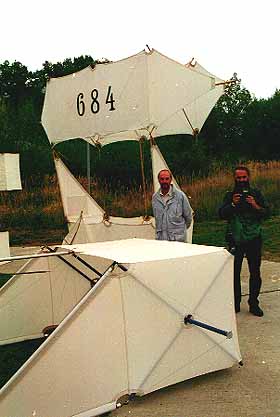
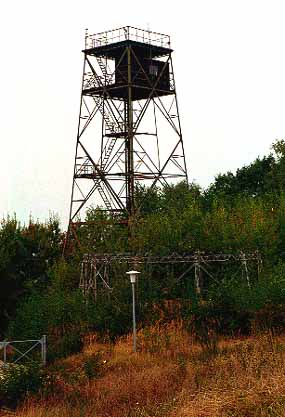
To the left you can see two GRUND-Regulierdrachen. These kites were used in the Thirties and Fourties to collect meteorological stuff; some samples had a surface of 64 m². Right:The last of the radio towers. In front of the tower the remains of a gas tank for the balloons.
Unfortunately today it`s not possible for common people to visit this historical place. More infos about the Lindenberg Meteorological Observatory are here (german).